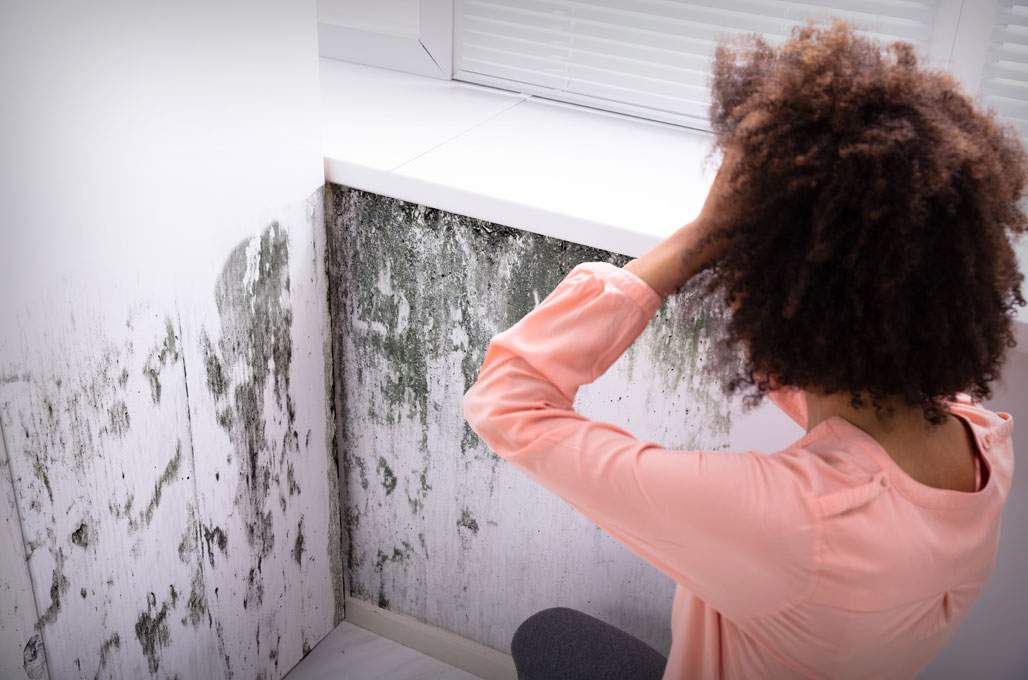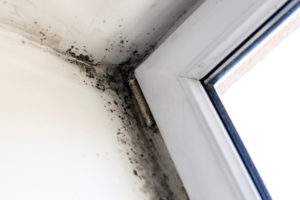Do You Have Mold in Your Home?

Mold is everywhere. If you live in a humid climate or have been hit by a storm that left standing water, you’re likely to have more mold in your home than average, but even the cleanest of homes in arid climates are likely to have some mold.
If you are someone who suffers from asthma or allergies, you will likely notice the effects of mold sooner than non-sufferers, though mold can cause negative symptoms for anyone. While not all species of mold (only a few dozen out of thousands of mold species, in fact) trigger health problems, the symptoms caused by those that do can be pretty serious.
Common symptoms can range from a sore throat, cough, and congestion to serious infections in the lungs for those with weakened immune systems or chronic lung conditions. Species of mold that produce mycotoxin can produce even more severe symptoms, including breathing problems, headaches, and permanent neurological damage.
Clearly, no one wants to live in an environment that makes them sick, so mold is something that should be taken seriously. But how do you check for mold in your home, and how do you know if it warrants professional remediation?
How to Check for Mold
There are a number of signs to look for when questioning whether you have mold in your home. Firstly, consider health-related signs. Do you or one of your family members experience symptoms when at home that seem to clear up when you leave the house? That can be a surefire sign. Similarly, you can use your senses to sniff out mold. If your home smells musty, you may have a mold problem. Be particularly vigilant as to whether a musty smell occurs when your A/C or heat is running, as that can pinpoint a mold issue in those systems.

Some signs that you may have a mold problem include:
- Small mold patches: Even a small patch of mold growth can indicate a bigger problem. Also, if you see a small patch (in your bathroom, for instance, where we often brush it off as unavoidable), that means the conditions in your home are right for mold growth, so there is likely more where that came from.
- Signs of water problems
- Water marks or discoloration on ceilings, walls, and floors
- Paint or wallpaper that is bubbling, cracking, or peeling
- Walls that have bowed, warped, or are bulging
- Any surface that feels damp
- Known water leaks: Even if the leak was taken care of in the past, mold may remain.
- Past flooding: As with leaks, just because the visible damage has been taken care of doesn’t mean that mold isn’t leaking just out of your eye’s reach. You may have mold growing behind walls, beneath floorboards, or really anywhere the water penetrated during the flood that wasn’t properly dried out in time.
- Condensation: If you see condensation on the insides of your windows, or on other glass surfaces, your home is very humid, and a perfect breeding ground for mold spores.
Mold can look different. All of the following are different appearances of mold species:
- Clusters of small black spots
- Growth that is black, gray-brown, gray-green, or white
- Velvety dark green or brown growth
- Orange, pink, or purple growth behind vinyl wallpaper
- Cotton-like growth that changes from white to grey to brown to black over time
- White growth with green patches
- Velvety blue or green growth (indicative of penicillin)
- Slimy growth that is dark green or black (indicative of toxic mold)
- A fine, powdery substance that appears where visible mold once was (indicative of toxic mold)

If you have done what you can to get rid of mold and it just keeps coming back, you might want to consider professional remediation even for small areas, as this might be indicative of a mold colony lurking behind a wall or ceiling. Similarly, if you have gotten rid of what mold you can see, but you or members of your household continue to suffer from potentially mold-related symptoms, it is likely that not all of the mold is really gone.
If you think you may have a mold problem in your home, Abbott’s is here to help. We will perform a mold inspection and work with you to make sure your home is mold-free, and guarantee complete eradication. Please reach out if you need help.
